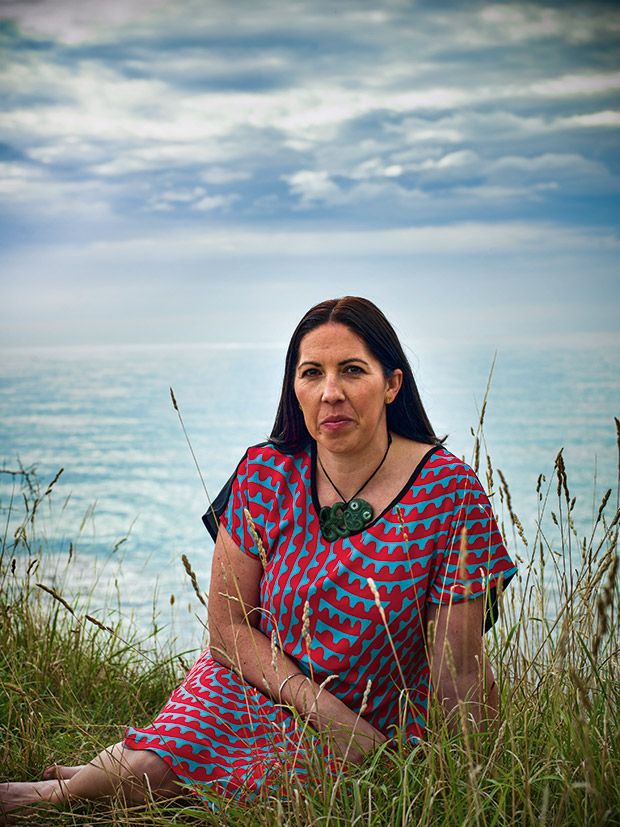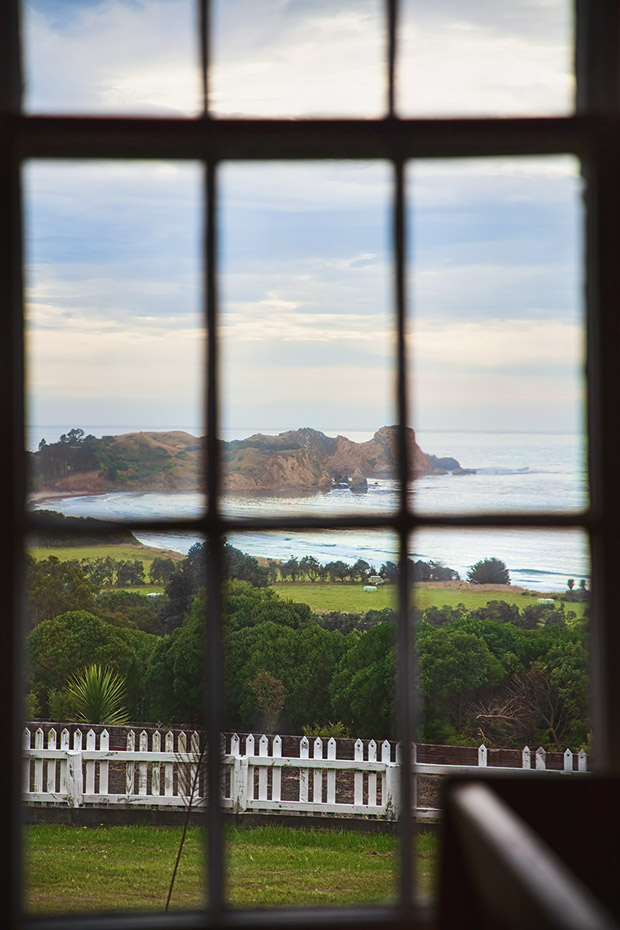How Dr Emma Wyeth is helping improve the health sector for Māori

Emma Wyeth’s regard for fairness and compassion is improving health outcomes for Māori.
Words: Amokura Panoho Photos: Guy Frederick
PEPEHA
Ko Hikaroroa te mauka
Ko Waikouaiti te awa
Ko Kāi Tahu rātou ko Te Ātiawa, Ngāti Mutunga, Ngāti Tama kā iwi
Ko Huirapa rāua ko Ōtākou kā marae
Ko Parata rātou ko Taiaroa ko Erihana kā whānau
Nō Karitāne ahau
Hikaroroa is my mountain
Waikouaiti is my river
Kāi Tahu, Te Ātiawa, Ngāti Mutunga, Ngāti Tama are my iwi
Huirapa and Ōtākou are my marae
Parata, Taiaroa, Erihana whānau are who I belong to
I am from Karitāne
The whakataukī/proverb of her Ngāi Tahu ancestors: Mō tatou ā mō kā uri, ā muri ake nei/For us and our children after us, guides Emma Wyeth’s daily life. Her ground-breaking research has identified disproportionate burdens of injury, and long-term disability for injured Māori; and her work in policy planning and tribal leadership is aimed at reversing these statistics.
WHAT IS YOUR CURRENT ROLE?
Associate professor in Māori health and director of the Ngāi Tahu Māori Health Research Unit in the Department of Preventive and Social Medicine at Otago University. I am also a member of several committees and advisory boards, including the Health Research Council’s Māori Health Committee, advising them on matters relating to Māori health outcomes and research.
WHAT AND WHO WERE THE MOST FORMATIVE INFLUENCES IN YOUR LIFE?
I had the benefit of growing up in Karitāne, near our marae in Puketeraki, where the importance of education was instilled in many generations of our whānau because of the legacy of our previous leaders.
Our ancestor, Te Matenga Taiaroa, was a prominent Ngāi Tahu chief, involved in many historical events before and during early colonization including attending the intertribal meeting at Pukawa, Lake Taupō, in November 1856, which elected Pōtatau Te Wherowhero as the first Māori king.

His granddaughter Nani Weller’s husband, Raniera Ellison, struck gold in 1861 at Māori Point on the Shotover River, which helped create the economic capacity for future generations to be educated and to establish farming and fishing businesses, ensuring ownership of our remaining lands.
Then there was my other great-great-grandfather, Tāme Parata, who lobbied and negotiated for a school at Puketeraki, which opened in 1875. Later, in 1885, he became the MP for Southern Māori. He understood that education and trade would enable his people to survive European contact and settlement and continued to lobby for the recognition of our rights, which resulted in the Ngāi Tahu land claim in 1991.
WHAT DOES THE CALL FOR LEADERSHIP MEAN TO YOU?
While at Otago University, I became aware of the multiple inequities in health that our people face and this set me on my public health research career.
I quickly learnt that not many Ngāi Tahu work in academia and those who do end up in leadership roles much earlier than usual. This brings with it added challenges and responsibilities that our non-Māori counterparts don’t always experience early in their careers. But it also provides an example of how our people can work in leadership roles in these institutions.
One of my primary goals since becoming the director of our research unit is to ensure Māori researchers are nurtured and supported and provided with multiple opportunities for their career development, while I try and protect them from the institutional issues and battles we often face. Without that type of support, many Māori in academia get burnt out and that has a negative flow-on effect.
WHAT IS YOUR GOAL WITH YOUR WORK?
For the past decade, most of my research has focused on injury and disability outcomes for Māori – where significant inequities exist – but there has been little research done in this area. Through our work to date, we have identified many factors that contribute to these inequities.
For example, injured Māori who have received support from ACC and have been hospitalized for their injury still experience more significant risks of long-term disability when compared with non-Māori. Additionally, many injured Māori report having trouble accessing healthcare services for their injuries, and this is having a detrimental effect on their recovery.
This is unacceptable within our society and fuels my commitment to understanding and improving Māori health outcomes, particularly within the Ngāi Tahu takiwā/region. This evidence-based approach is of national importance, and my iwi is proactive in utilizing this information to enhance their own services and lobby with government and mainstream medical and health professionals to improve their delivery models.
FOR THE LOVE OF FAMILY
My drive for fairness and having high expectations for doing better comes from people who have been prominent in my life. In childhood, it was my taua/grandmother (Ngāi Tahu dialect), Marara Hera Atanui, who also fostered my love of clothes, shoes and handbags. Her gentle and caring nature is an enduring memory – something I try to emulate whenever possible. Through her, I was constantly surrounded by our extended whānau – and there were lots as she was the youngest in her family of 17.
Unlike many of her siblings, Taua sadly did not make it to her 90s. However, a number of my grand-aunts and uncles, along with my parents Roger and Chris and maternal grandmother Joyce Young, always provided unconditional support and encouragement as my career evolved.
My husband Michael is from Bluff, a place other than Puketeraki and Karitāne that provides our children with strong connections to their Ngāi Tahu whakapapa – what we have gained and lost over the generations. These communities ground us, and give us a sense of place which, in turn, helps drive my research work to improve the health and wellbeing of our people. With Michael’s grandparents,
Tiny and Maurine Metzger (who are in their early 80s), a constant in our children’s lives, we are lucky to be a living example of the Ngāi Tahu whakataukī.
Mō tatou ā mō kā uri, ā muri ake nei.
ABOUT EMMA
Emma is a descendant of the Ngāi Tahu chief Te Matenga Taiaroa, Te Ātiawa goldminer and Ōtākou farmer Raniera Ellison and MP for Southern Māori Tame Parata. She is married to Ngāi Tahu historian Dr Michael Stevens and has three tamariki: Kura-Mātakitaki, Te Haeatanui and Tūhiku-a-Kiwa.
MORE HERE
Love this story? Subscribe now!
 This article first appeared in NZ Life & Leisure Magazine.
This article first appeared in NZ Life & Leisure Magazine.
